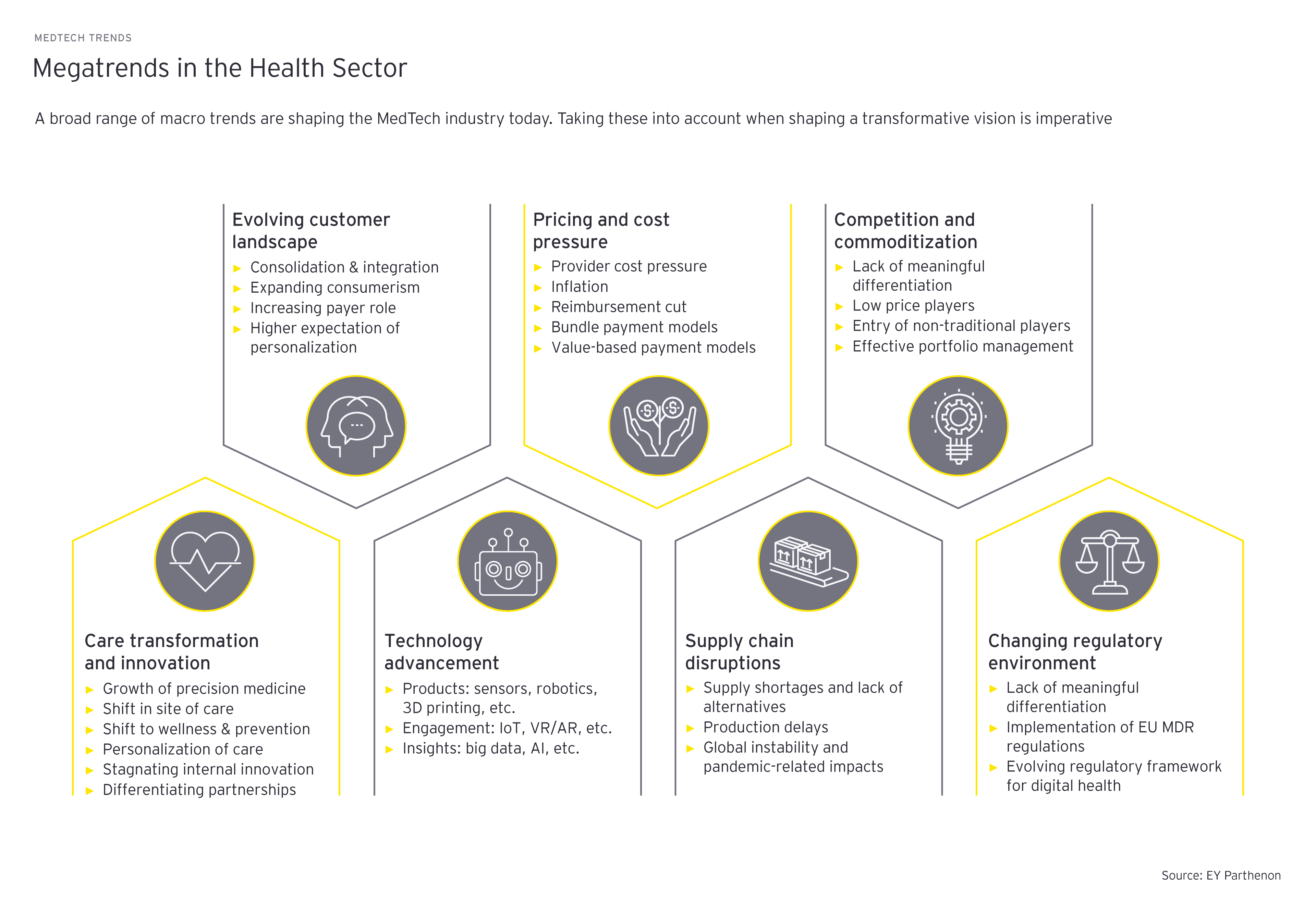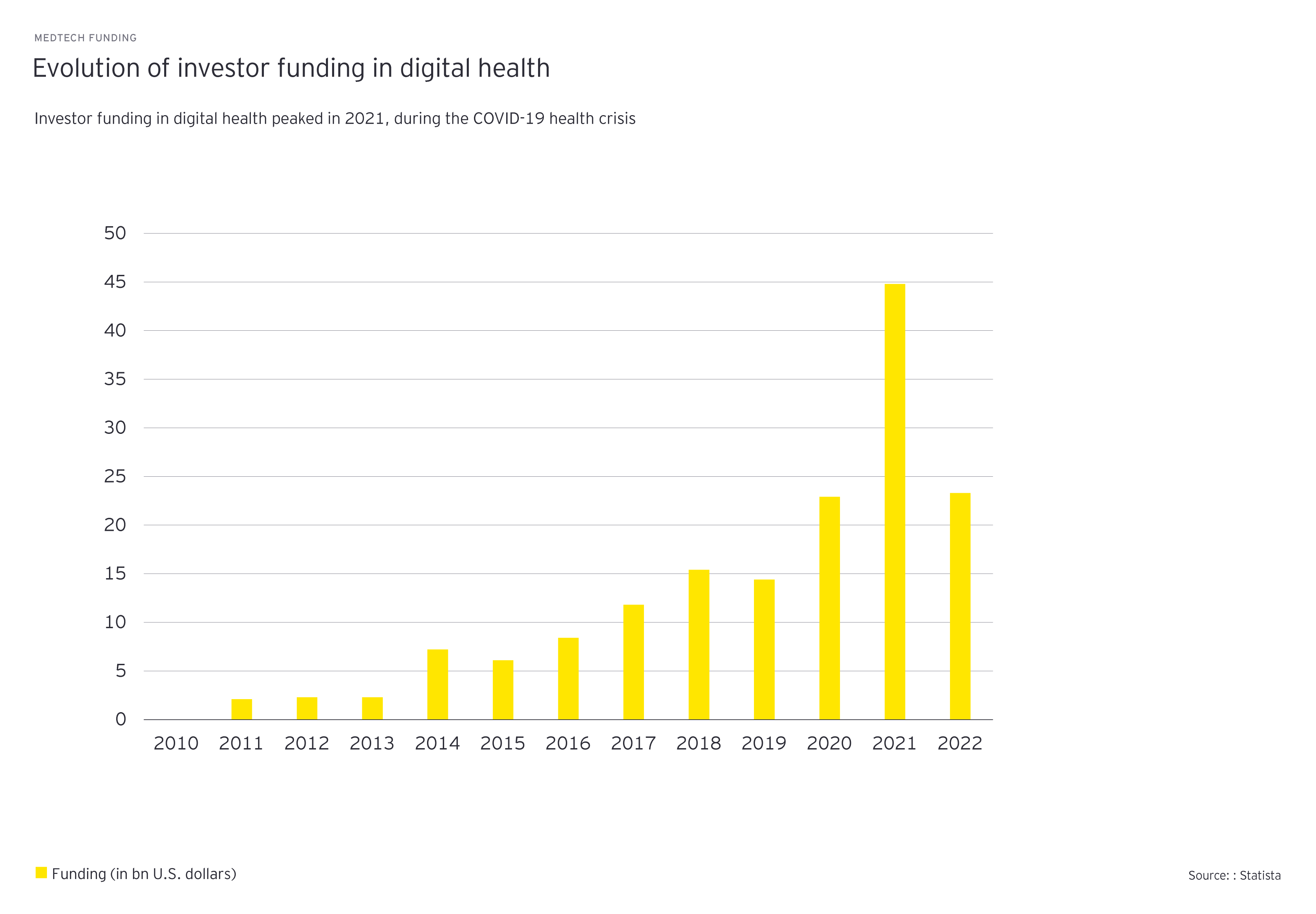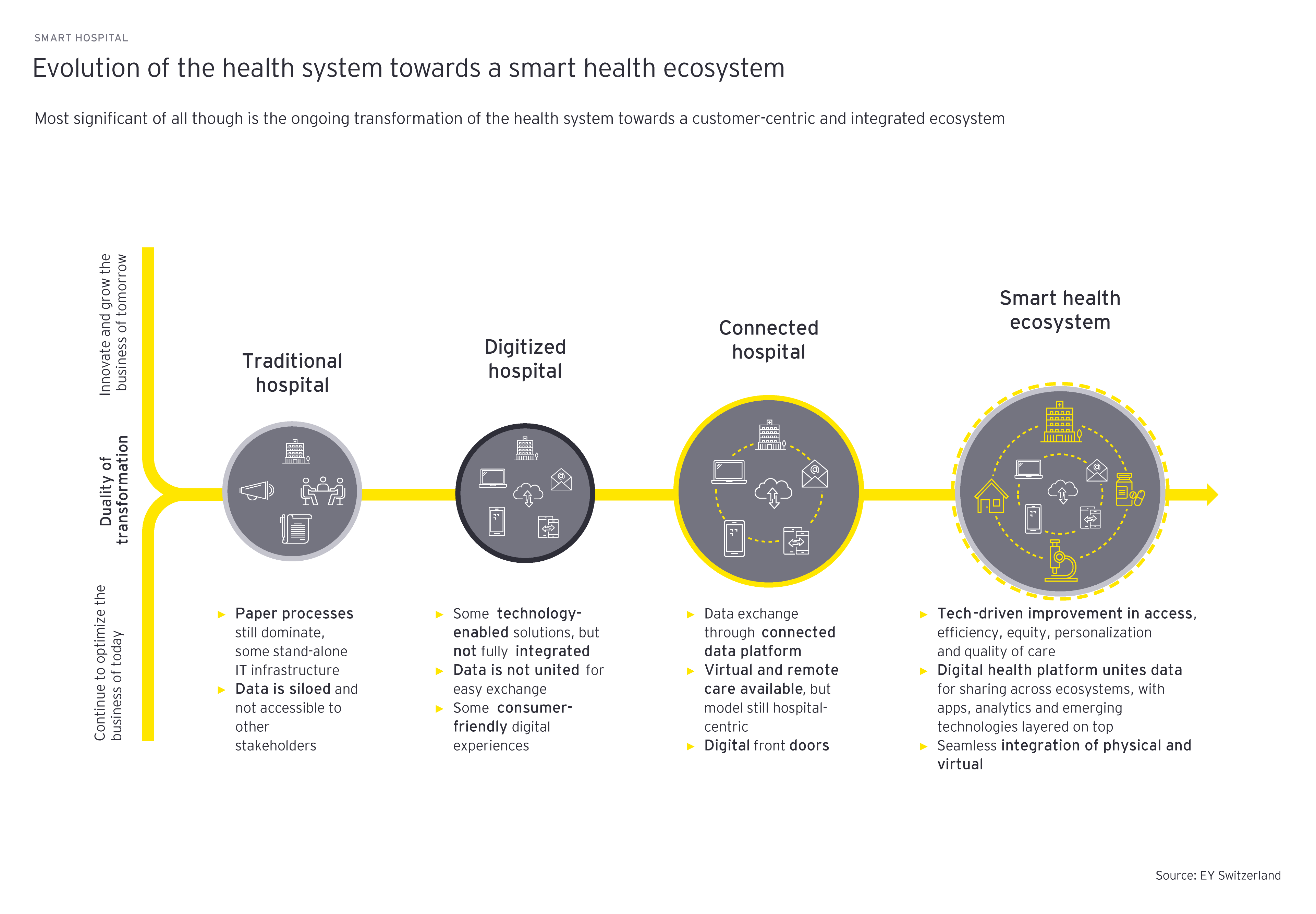MedTech companies have made strides towards patient centricity, but further advances are to be made. This can be achieved by moving towards the transformation of smart health with the enhancement and adoptions of digital platforms. Supporting companies accelerate a transformation that encompasses trends and challenges, we believe that the adoption of key characteristics of ecosystem models from other industries is a winning strategy.
Partnerships between MedTech companies and digital solution providers are becoming increasingly common as both industries seek to develop innovative solutions to improve healthcare outcomes. These collaborations often involve the use of AI, machine learning, and other cutting-edge technologies to develop new medical devices, diagnostic tools, and treatment solutions. For example, Medtronic and NVIDIA are collaborating to accelerate the development of AI in the healthcare system and bring new AI-based solutions into patient care7. This could allow Medtronic to scale the development of algorithms to enhance real-time procedures and improve patient care.
Server management providers such as Amazon Web Services (AWS) or the Google Cloud Platform have been able to take advantage of network effects by delivering core functionalities needed for internet-based development, resulting in most of the web being built on their systems. This has enabled these providers to improve the quality, connectivity and interoperability of the services provided through the accompanying marketplaces, where third-party providers can offer solutions in related categories.8 A successful ecosystem platform balances two priorities: economic scalability by attracting participants through lower entry barriers and ensuring data security and compliancy with regulations. The infrastructure layer is foundational, composed of effective data capture, curation, management, storage, and interoperability to create a common data set upon which the ecosystem can operate.
Reflecting on this example, five key characteristics have been identified as a common denominator to leading digital ecosystem players’ success: they offer convenience, a seamless trading exchange, a predictive and personalized experience, high consumer choice and transparency.
For MedTech companies seeking to make the shift to a more digitally enhanced smart health system, following these guiding principles will be key in accelerating the transformation. The future of care should be patient-centric as well as integrated and should break down the existing silos between healthcare settings. This can be achieved by applying the above-mentioned principles to the MedTech industry as follows:
- Convenience: smooth integration of physical and virtual, omnichannel experience
- Data liquidity: seamless trading exchange
- Predictive and personalized: preventative and predictive care
- Transparency: end-to-end visibility of supply chain
- High consumer choice: tech- and design-driven improvements in access, efficiency, equity, personalization and care quality
- Monetization: ability to charge adequate fees for the value it brings to the ecosystem
While mastering transformation towards a patient ecosystem is challenging, MedTech companies have an imperative to rethink their value creation mechanism and operating model. Building an ecosystem is a multi-step approach where additional products and services from partners can be integrated to capture new value sources on the one hand and where companies can build end-to-end solutions to improve their technology and achieve economies of scale on the other hand.
MedTech companies face challenges in managing the complexity of their offering portfolio, especially as the industry becomes more advanced and diversified. To address this challenge, companies need to adopt a strategic pricing approach that considers factors such as customer needs, market dynamics, and value proposition. This approach should be based on a thorough understanding of the competitive landscape and customer segmentation, as well as an analysis of the costs associated with the development and delivery of the products and services. MedTech companies should also invest in advanced analytics and data-driven tools to improve their pricing decisions and increase their margin.
Another challenge faced by MedTech companies is implementing more efficient and effective go-to-market models. This is particularly relevant for companies operating in highly competitive and rapidly evolving markets, such as wound care and surgical navigation for example. To overcome this challenge, companies should focus on building strong relationships with key opinion leaders, healthcare providers, and payers, leveraging technology and digital platforms to reach a wider audience, and developing innovative sales and marketing strategies that address the changing needs of their customers. This could include investing in customer analytics and insights, leveraging social media and digital marketing channels as well as building collaborative partnerships with other players in the healthcare ecosystem. Ultimately, the success of MedTech companies in implementing more efficient and effective go-to-market models will depend on their ability to leverage technology, to embrace innovation and to stay ahead of the competition.
To drive the transformation towards smart health, EY teams bring together the entire healthcare ecosystem by exploring collaboration opportunities, leveraging innovation, sustainability, technology, strategic planning, organizational design and process transformation – putting the Humans@Center to drive better outcomes for all.











